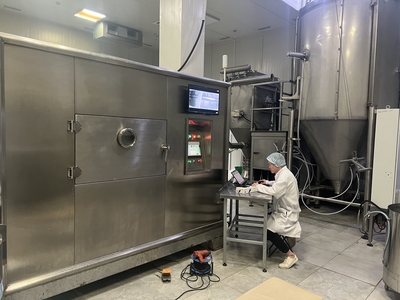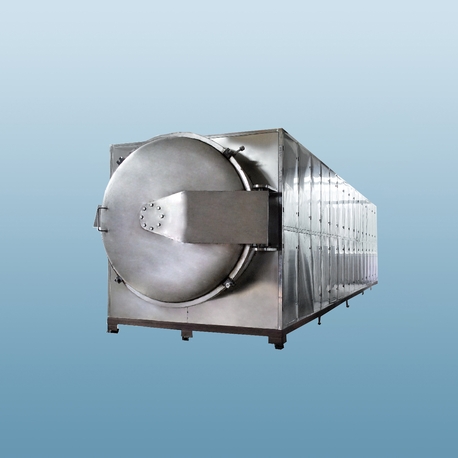In a world increasingly focused on health and convenience, the quest for the perfect snack is never-ending. We want something delicious, nutritious, portable, and satisfying. Enter the timeless and versatile world of fruit dry. More than just raisins and prunes, the universe of dried fruits is vast, colorful, and bursting with flavor. From chewy mango strips to tart cranberries and sweet apple rings, fruit dry options offer a natural way to satisfy a sweet tooth while providing a concentrated dose of nutrients. This article delves deep into the essence of fruit dry, exploring its history, benefits, and how you can best incorporate it into your modern lifestyle.

The Ancient Art of Fruit Dry: A Journey Through Time
The process of removing moisture from food is one of humanity's oldest preservation techniques. Long before refrigeration, people discovered that drying fruit significantly extended its shelf life, preventing spoilage and allowing them to enjoy the taste of summer during harsh winters. Early methods were simple and relied on the sun and wind. Fruits were laid out on rocks, mats, or special drying trays under the hot sun, a technique still used today in many parts of the world and known as sun-drying.
Civilizations across the globe embraced this practice. Ancient Mesopotamians dried dates and figs, while the Romans prized dried grapes (raisins) and apples. Indigenous peoples in the Americas made pemmican, a long-lasting travel food that often included dried berries. This historical context shows that fruit dry isn't a modern health fad but a fundamental culinary tradition that has nourished people for millennia. Today, while sun-drying is still used, modern methods like tunnel drying, drum drying, and freeze-drying have expanded the possibilities, creating a wider variety of textures and flavors for us to enjoy.
How is Fruit Dry Made? Understanding the Process
The core principle behind creating fruit dry is simple: remove the majority of the water content from the fruit. Water is essential for microbial growth like bacteria, yeast, and mold. By reducing the water activity, the fruit becomes shelf-stable and safe to eat for long periods. The specific method used can influence the final product's taste, texture, and nutritional profile.
The most common commercial method is dehydration. Here, fruits are placed in a controlled environment where heated air is circulated around them. This warm, dry air draws the moisture out of the fruit over several hours. Another popular method, especially for creating a crispier texture, is freeze-drying. In this process, frozen fruit is placed in a strong vacuum, causing the frozen water within to sublimate directly from solid ice to gas. This method preserves the fruit's original shape and color exceptionally well and results in a light, airy, and crunchy snack. Regardless of the method, the outcome is a concentrated, energy-dense, and sweet product we know as dried fruit.

The Nutritional Powerhouse: Benefits of Incorporating Fruit Dry
It's no secret that fruit is good for you, and dried fruit is a concentrated source of vitamins, minerals, and beneficial plant compounds known as phytochemicals. Because the water is removed, the nutrients and calories are condensed into a much smaller package.
Rich in Fiber: Dried fruits are famously high in dietary fiber, which is crucial for digestive health, promoting regularity, and supporting a healthy gut microbiome. Prunes, for example, are well-known for their natural laxative effect due to their fiber and sorbitol content.
Packed with Antioxidants: Many dried fruits, particularly berries like goji berries and cranberries, as well as apricots and figs, are loaded with antioxidants. These compounds help combat oxidative stress and inflammation in the body, potentially reducing the risk of chronic diseases.
Essential Vitamins and Minerals: Different dried fruits offer different micronutrient profiles. Dried apricots are an excellent source of vitamin A and potassium. Raisins provide iron and boron, which is important for bone health. Dried figs offer calcium. This makes a mix of dried fruit a potent multivitamin from nature.
Natural Energy Boost: The natural sugars (primarily fructose and glucose) in dried fruit are easily absorbed by the body, providing a quick source of energy. This makes them an excellent pre-workout snack or a perfect pick-me-up during an afternoon slump, far superior to processed sugary snacks.
Navigating the Sweetness: Common Questions and Concerns About Fruit Dry
While dried fruit is undoubtedly healthy, consumers often have valid questions. Being an informed shopper is key to reaping the maximum benefits.
1. Is the sugar content in dried fruit too high?
This is the most common concern. Yes, dried fruit is high in sugar and calories by volume because it's concentrated. However, it's important to distinguish between natural intrinsic sugars and added sugars. Always check the ingredient list. The best choices contain only the fruit itself. Avoid products that list "sugar," "cane syrup," or "fruit juice concentrate" in the ingredients, as these are added sugars. Portion control is also essential; a small handful is a serving, not the entire bag.
2. Are sulfites and other additives something to worry about?
Some dried fruits,
like apricots, golden raisins, and mangoes, are often treated with sulfur dioxide (sulfites) to preserve their vibrant color and extend shelf life. While generally recognized as safe for most people, sulfites can trigger asthma and allergic reactions in sensitive individuals. If this is a concern, look for packages that explicitly state "unsulfured" or "no sulfur dioxide added." These fruits will often have a darker, more caramelized color but are just as delicious.
3. How should I store my dried fruit to keep it fresh?
To maximize freshness and prevent spoilage, store your dried fruit in a cool, dark, and dry place. An airtight container is crucial to prevent the fruit from absorbing moisture from the air, which can lead to mold. For long-term storage, you can keep it in the refrigerator or even the freezer, which will significantly extend its shelf life.
4. Can I make fruit dry at home?
Absolutely! Making homemade dried fruit is a rewarding process. You don't need specialized equipment to start; an oven on its lowest setting with the door slightly ajar can work. However, a home food dehydrator is a worthwhile investment for enthusiasts. It provides precise temperature control and efficient air circulation, resulting in a perfectly dried product. You can control exactly what goes into your food—no added sugars or preservatives.
5. Is dried fruit as good as fresh fruit?
Both fresh and dried fruit have a place in a healthy diet. Fresh fruit has a higher water content, making it more voluminous and hydrating. Dried fruit is more calorie-dense and portable. Think of them as complementary. The key dietary recommendation is to eat a variety of fruits, and dried fruit can be one delicious way to help you meet your daily fruit intake goals, as long as you are mindful of portion sizes.
Creative Ways to Enjoy Fruit Dry in Your Daily Diet
Moving beyond the simple snack, dried fruit is incredibly versatile in the kitchen. Its sweet and chewy texture can add a delightful contrast to numerous dishes.
Breakfast Boost: Stir chopped dates, apricots, or berries into your oatmeal, yogurt, or cereal.
Baking Buddy: Add raisins to cookies, cranberries to scones, or chopped dried figs to bread for a natural sweetness.
Salad Savior: Crumble goat cheese over a bed of greens and top with dried cranberries and walnuts for a classic flavor combination.
Savory Sensation: Chop up dried apricots or cherries and add them to rice pilafs, stuffings, or tagines for a surprising and complex sweet-savory note.
Trail Mix Titan: Create your own custom trail mix with nuts, seeds, and your favorite dried fruits for the ultimate energy snack.
From its rich historical roots to its modern nutritional appeal, fruit dry remains a testament to simple, intelligent food preservation. By understanding how it's made, its health benefits, and how to navigate common questions, you can confidently make this ancient, wholesome, and delicious snack a vibrant part of your healthy lifestyle.













